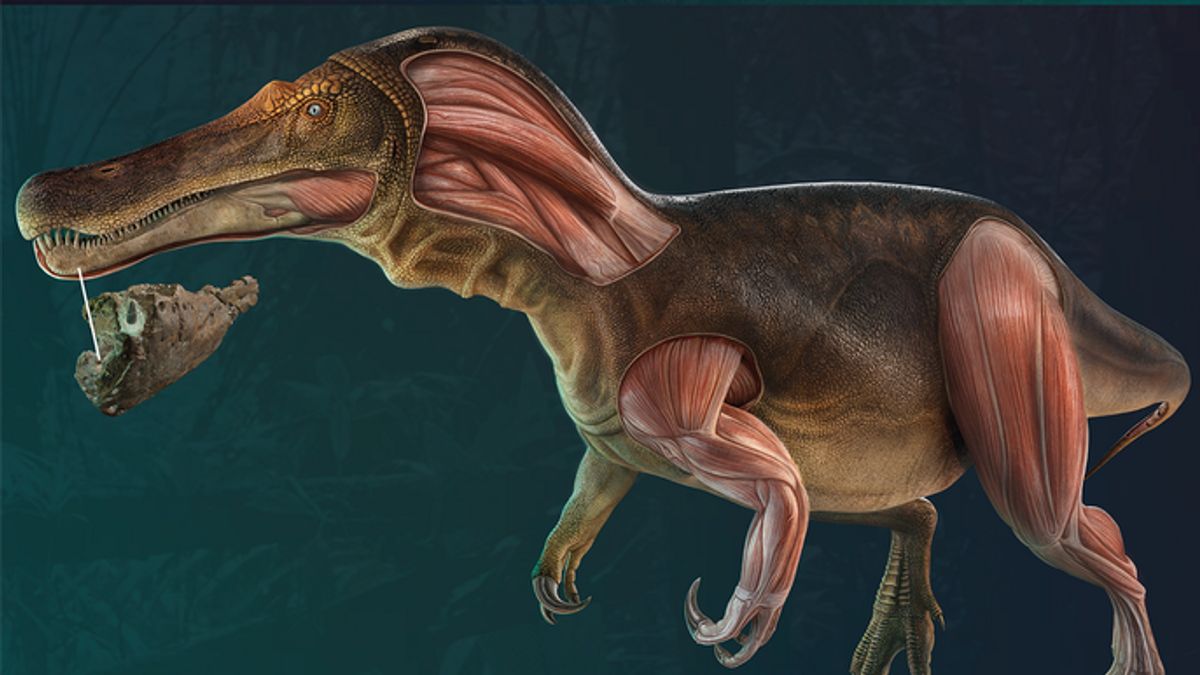JAKARTA - A new type of dinosaur has been found, but the unique thing is that this ancient animal has a face like a crocodile. According to paleontologists, this is probably a predator that waded through the waters and ate fish.
The dinosaur, dubbed the spinosaurid, lived more than 125 million years ago, and had a skull that resembled a crocodile's, and a thorny back.
Paleontologists in Cabo Espichel, Portugal, discovered Spinosaurid bones and teeth in 2020 from the dinosaur Iberospinus natarioi, which they say would have lived in the early Cretaceous period.
Not only Spinosaurids, experts also found the remains of ornithopods, turtles, pterosaurs, and fish found in the same location.

"Despite the fragmentary nature of the remains, it is currently one of the most complete spinosaurid specimens in the world," said paleontologists and biologists Octávio Mateus and Darío Estraviz-López, of the Universidade NOVA de Lisboa.
The two experts describe their research in an article published Wednesday in the journal PLOS One.
According to both quoted from CNET, Thursday, February 17, the oldest confirmed spinosaurid dinosaurs have been traced back to Western Europe and Southeast Asia, but the creatures later appeared in Southeast Asia, Africa, and South America.
Their evolutionary history is more difficult to trace than other dinosaurs. Experts point to a ghost lineage 50 million years ago, through the middle Jurassic and early Cretaceous periods, where rare fossils have yet to be fully discovered.
The lack of spinosaurid remains is partly because they lived in aquatic environments, either as specialized pursuit aquatic predators in some cases or as ambush hunters, such as storks.
This makes the latest discovery important, as it contains so many bones and other remains, including teeth, dentary fragments, right partial scapula, dorsal nerve arch, dorsal vertebra, vertebrae, rib fragments, pubic trunk, pubic trunk, heel bone and the phalanx.
The English, Chinese, Japanese, Arabic, and French versions are automatically generated by the AI. So there may still be inaccuracies in translating, please always see Indonesian as our main language. (system supported by DigitalSiber.id)










